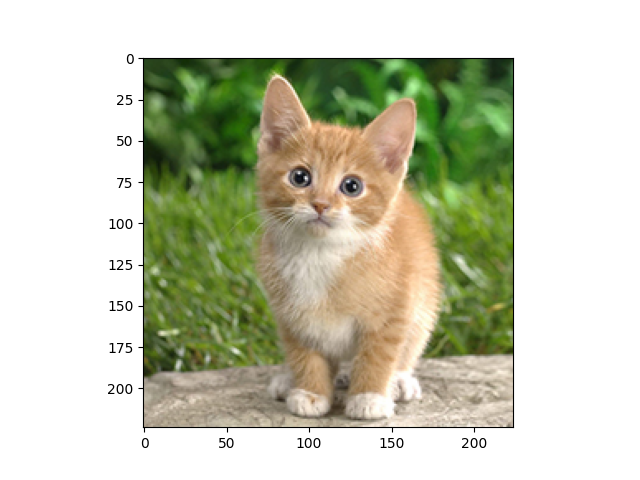Note
Click here to download the full example code
Compile Caffe2 Models¶
Author: Hiroyuki Makino
This article is an introductory tutorial to deploy Caffe2 models with Relay.
For us to begin with, Caffe2 should be installed.
A quick solution is to install via conda
# for cpu
conda install pytorch-nightly-cpu -c pytorch
# for gpu with CUDA 8
conda install pytorch-nightly cuda80 -c pytorch
or please refer to official site https://caffe2.ai/docs/getting-started.html
Load pretrained Caffe2 model¶
We load a pretrained resnet50 classification model provided by Caffe2.
from caffe2.python.models.download import ModelDownloader
mf = ModelDownloader()
class Model:
def __init__(self, model_name):
self.init_net, self.predict_net, self.value_info = mf.get_c2_model(model_name)
resnet50 = Model("resnet50")
Load a test image¶
A single cat dominates the examples!
from tvm.contrib.download import download_testdata
from PIL import Image
from matplotlib import pyplot as plt
import numpy as np
img_url = "https://github.com/dmlc/mxnet.js/blob/main/data/cat.png?raw=true"
img_path = download_testdata(img_url, "cat.png", module="data")
img = Image.open(img_path).resize((224, 224))
plt.imshow(img)
plt.show()
# input preprocess
def transform_image(image):
image = np.array(image) - np.array([123.0, 117.0, 104.0])
image /= np.array([58.395, 57.12, 57.375])
image = image.transpose((2, 0, 1))
image = image[np.newaxis, :].astype("float32")
return image
data = transform_image(img)

Compile the model on Relay¶
# Caffe2 input tensor name, shape and type
input_name = resnet50.predict_net.op[0].input[0]
shape_dict = {input_name: data.shape}
dtype_dict = {input_name: data.dtype}
# parse Caffe2 model and convert into Relay computation graph
from tvm import relay, transform
mod, params = relay.frontend.from_caffe2(
resnet50.init_net, resnet50.predict_net, shape_dict, dtype_dict
)
# compile the model
# target x86 CPU
target = "llvm"
with transform.PassContext(opt_level=3):
lib = relay.build(mod, target, params=params)
Execute on TVM¶
The process is no different from other examples.
import tvm
from tvm import te
from tvm.contrib import graph_executor
# context x86 CPU, use tvm.cuda(0) if you run on GPU
dev = tvm.cpu(0)
# create a runtime executor module
m = graph_executor.GraphModule(lib["default"](dev))
# set inputs
m.set_input(input_name, tvm.nd.array(data.astype("float32")))
# execute
m.run()
# get outputs
tvm_out = m.get_output(0)
top1_tvm = np.argmax(tvm_out.numpy()[0])
Look up synset name¶
Look up prediction top 1 index in 1000 class synset.
from caffe2.python import workspace
synset_url = "".join(
[
"https://gist.githubusercontent.com/zhreshold/",
"4d0b62f3d01426887599d4f7ede23ee5/raw/",
"596b27d23537e5a1b5751d2b0481ef172f58b539/",
"imagenet1000_clsid_to_human.txt",
]
)
synset_name = "imagenet1000_clsid_to_human.txt"
synset_path = download_testdata(synset_url, synset_name, module="data")
with open(synset_path) as f:
synset = eval(f.read())
print("Relay top-1 id: {}, class name: {}".format(top1_tvm, synset[top1_tvm]))
# confirm correctness with caffe2 output
p = workspace.Predictor(resnet50.init_net, resnet50.predict_net)
caffe2_out = p.run({input_name: data})
top1_caffe2 = np.argmax(caffe2_out)
print("Caffe2 top-1 id: {}, class name: {}".format(top1_caffe2, synset[top1_caffe2]))
Out:
Relay top-1 id: 287, class name: lynx, catamount
Caffe2 top-1 id: 287, class name: lynx, catamount

